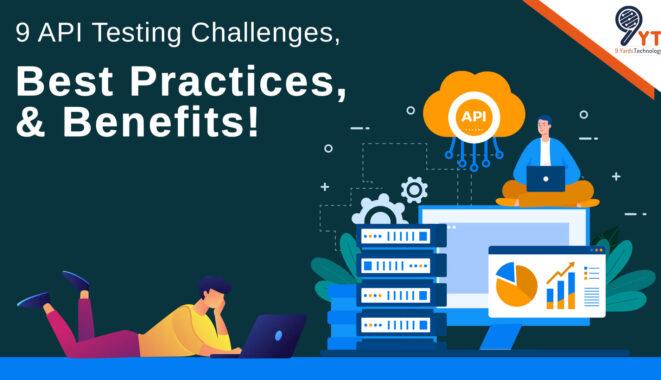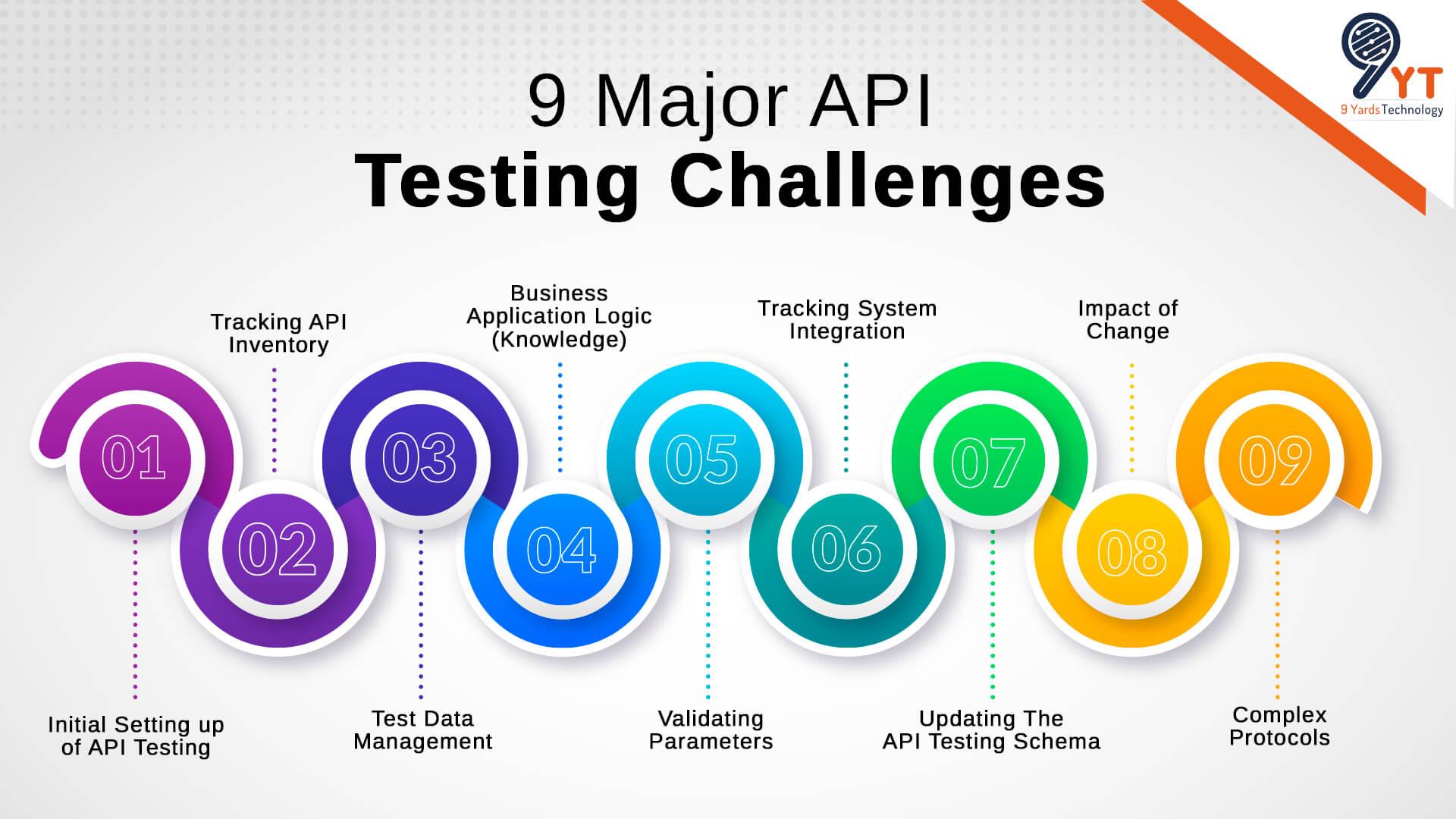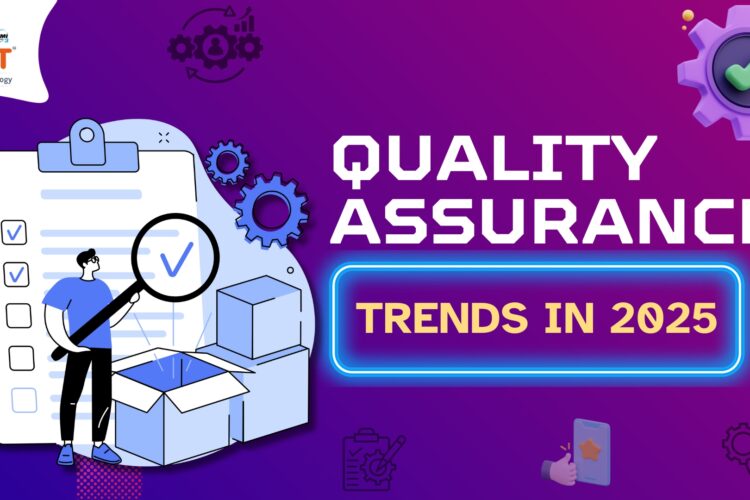
Want to know why the big retailers’ businesses are flourishing? The reason behind their big hit is the ease of surfing between different stores, eliminating risks, and creating a seamless user experience. We have created this fantastic piece highlighting API testing challenges, best practices, and advantages. That helps businesses by saving time and money for the users. This was possible through rigorous software testing and APIs. API (Application Programming Interface) is the type of testing that involves tools, protocols, routines, rules, and logic for setting up communication between different applications.
API testing creates a core part of the testing services. Thus, it forms the middle layer application pyramid, which consists of three layers: the data layer, the server layer, and the presentation layer. The data layer concerns the user interface with data storage. The server layer consists of business logic and defines how users interact with the various features, functions, and information.
API Testing Interface is defined as a means to safeguard as well as optimize communication between several applications, analyzing various components, including pinpointing flaws, debugging, encountering inconsistency, and evaluating performance and security. However, API testing is faster than functional GUI(Graphical User Interface) testing, thus safeguarding the core functionalities quickly by incorporating them with GUI testing.
Like every other test, some challenges occur while performing API testing. And API testing is not an exemption.
9 Major API Testing Challenges
Creating an effective and sustainable API testing practice within an organization can maintain test coverage and secure reduced risk across public and internal interfaces. Testing APIs implies going beyond the surface of the GUI layer to examine the application to its core, which is hugely worthwhile. However, organizations face many challenges in successfully embracing an effective API testing process.

- Initial Setting up of API Testing
Getting started with the initial test infrastructure and running is one of the critical challenges of the process, as it can be arduous and also a motivation killer. However, a dedicated software QA team once completes this procedure. It pays off over the long term. Hence, after setting up your testing environment, you can start by collaborating your application data with the API tests to ensure the API performance as expected.
- Tracking API Inventory:
Numerous APIs involved in an application act independently of each other. While conducting API tests, it gets problematic for testers to keep up with quick updates and how those updates affect the overall application. Tracking the API inventory is an essential activity – without it, tests fail or miss estimating recent changes to the application and APIs.
- Test Data Management:
Numerous APIs with various parameters require enormous data to test them effectively. Managing such a huge amount of data and securing that the data is reusable is a big challenge for API engineers. In addition, the diversity between the APIs and the limited access to the source platform makes test data management challenging. Organizations seeking to incorporate API testing into their test automation face these challenges as they build a sustainable and maintainable workflow.
- Business Application Logic (Knowledge):
APIs usually have rules and guidelines dictating their usage, such as copyright policies, storage policies, rate limits, and display policies. Based on the overall business logic, a set of business rules is defined on which APIs are developed, used, and integrated. The lack of knowledge and understanding of this business logic and rules among API testers lead to ambiguity regarding the test objective.
- Validating Parameters:
One of the essential things is validating parameters, which is sometimes challenging. As it demonstrates how fast you serve those parameters. The QA team needs to ensure that parameter data utilizes the appropriate numerical data type or appropriate string that fits within the assigned values, passes validation criteria, and fits within limitations. It can be solved with continuous API monitoring that grabs issues early on. Besides, after combining it with an APM solution, it gets a complete 360-degree view.
- Tracking System Integration:
Another challenge of API testing is tracking whether the API works accurately with the data-tracking system. It is crucial to bring back the correct responses on whether or not a call works accurately. Also, it is utilized to inspect API’s performance. As this particular step can come late in the process, the expert tester may find it exhaustive to give the required interest.
Thus it becomes essential to focus on applications in the designing phase to check how well they will integrate with other systems. Several apps have diverse needs that are required to meet. Therefore, it is crucial to ensure that apps work well in parallel with important integration systems. Furthermore, it is performed by executing load testing in your steady delivery.
- Updating the API Testing Schema
The schema is the data formatting that handles the requirements and requests for the API –necessary to be maintained throughout the test procedure. Any upgradation to the program that creates added parameters for the API calls should reflect the schema configuration.
In the current API economy, having an ever-changing Application programming interface helps boost the demand. But, there can be downtime driven by those alterations. The best bypassing is to fully API test in alpha and beta circumstances. The possibility of complications can quickly decrease by 80-85 % when testing in such environments.
- Impact of Change:
The latest version of an API will likely cause the entire application to go haywire. Furthermore, as there are multiple dependent components, implementing a change is often highly risky and unpredictable in terms of its effects.
- Complex Protocols:
In addition to this, the final API testing challenge is complex protocols. APIs interact through defined rules known as contracts or protocols. Often these protocols are complicated and might hinder the proper integration and testing of the communication between components.
Though there are several API testing challenges, you can use the below-mentioned best practices to take your product to the next level.
Best Practices of API Testing
From the above text, we can see some API testing challenges that professionals face while executing tests. But, API testing has evolved as an integral part of the software development process, as it helps to ensure the functionality, reliability, and security of APIs. So, here are some best practices for API testing:
- Plan The Testing Strategy:
Before starting the testing process, understanding the API’s functionality and expected behaviour is essential. This information should be used to develop a testing strategy that covers all the necessary scenarios and test cases.
- Automate Tests:
Automated testing can save time and effort and improve the testing process’s accuracy. Consider using a test automation framework for API testing, such as Postman, SoapUI, or JUnit.
- Test for Error Handling:
APIs should be tested for their ability to handle and return appropriate error messages for different types of error conditions.
- Test for Security Vulnerabilities:
APIs can be vulnerable to threats like SQL injection, cross-site scripting, and unauthorized access. Therefore, it’s vital to test APIs for these vulnerabilities and ensure they have proper security measures.
- Test Performance:
APIs’ performance should be tested under different load conditions to handle the expected traffic. This can be done using load testing tools like Apache JMeter.
- Test Compatibility:
APIs should be tested for compatibility with different platforms, browsers, and devices to ensure they work as expected for all users.
- Test Documentation:
The documentation for APIs should be tested for accuracy and completeness to ensure that developers can easily understand and use the APIs.
- Continuous Testing:
APIs should be tested continuously, especially after any changes are made, to ensure they remain functional and reliable.
- Don’t Rehash:
Before including tests, make a customer for SUT (System Under Test), and refrain from rehashing your code. However, several tests foresee addressing similar segments or comparative activities.
- Transparency:
Draft clear tests that empower investigation effectively. While tests run effectively, they require no consideration or time. This process might be tiresome amid the item advancement, similar to pushing due dates or cutting new highlights from your item.
By following these best practices, businesses can ensure that their APIs are high quality, reliable, and secure and can deliver the expected results.
Benefits API Testing Offers

- Technology Independent
The process of API testing involves exchanging data in XML or JSON formats. This data transport process is freed of application language, which allows QA engineers to utilize any programming language that allows these technologies to automate API testing, including PHP, Ruby, Java, JavaScript, and more. This testing can be automated effectively since endpoints and parameters are feasible to change. In addition, it requires fewer scripting efforts as compared to GUI automated tests.
- Quicker Time to Market
One of the edges of API tests is that it takes a shorter time than functional GUI testing, as the latter involves polling web page elements which takes much time. If you want to understand how much time API tests save by testing the software’s core functionality, here is a brief comparison. “3,000 API tests (50 minutes – in parallel implementation) will take 3,000 GUI tests (30 hours – in parallel implementation).
You should predict similar time reductions for your QA UI testing team. Selecting from the range of API testing procedures assures better and faster test coverage than automated GUI tests, as the API test automation demands less code.
- Thickened Risks
API testing doesn’t mandate dependency on GUI and other sub-modules. It can be executed independently at earlier stages to study the core business logic. Though, it can be reported back immediately without waiting for others to complete it in case of any issues. In addition, it represents specific business logic. Thus, it becomes easy for teams to separate the buggy module and independently fix it at the earliest. Furthermore, it lowers the quantum of time slab between builds and release cycles, resulting in faster releases.
- Improved Test Coverage
An automated API test may cover a broader range of functionality than unit tests constrained to only functional components within a particular application. This is where the bulk issues arise. On the other hand, tests at the API level aim to ensure that all system components work as intended. The advantage of such API testing is that it aids in enhancing the program’s overall quality and user experience.
- Ease of Test Maintenance
API tests are usually considered stable, but major changes occur when business logic is changed. The portion and amount of transformations are comparatively less. It implies rewriting test cases when any changes emerge. API tests are reused during testing, thus reducing the overall testing quantum time required. Categorizing test cases for better test case management is a good idea since API involved in such applications can be enormous.
- Seamless Integration and Corporation
With API testing, exceptionally integrable tests are conceivable. This is particularly useful if you intend to perform practical GUI tests following your API testing. For instance, simple reconciliation would consider making new clients inside the application before the beginning of a GUI test.
- One Store Shop for All Business Requirements!
Since data has become one of the most important assets for organizations around the globe in this data-driven world, thus it has become vital for businesses to raise the produced information volume with each day. As it is crucial to make informed and people-centric decisions, and thus it is used to expose business services to customers and partners.
How does API Help businesses Excel?
APIs, or Application Programming Interfaces, play a crucial role in helping businesses excel in today’s digital world. Here are some ways in which APIs can benefit businesses:
- Integrating Systems:
APIs allow different systems and applications to communicate with each other, facilitating seamless integration and automating manual processes. This can lead to improved productivity and efficiency.
- Improves Customer Experience:
APIs can be used to build custom customer experiences, such as personalized recommendations, faster checkout processes, and real-time updates on delivery status.
- Expands Reach:
APIs can expose a business’s data and services to external developers, who can build new applications with this data. This can help businesses reach new customers and markets.
- Enables Innovation:
APIs can provide access to new technologies and data sources, allowing businesses to stay ahead of the curve and continuously innovate.
- Drives Revenue:
APIs can generate new revenue streams, like selling access to data or charging for API usage.
Some Suited Frameworks for QAs While Executing Tests are:
Using one tool and reviewing across all layers and systems is essential.
- Using outputs from one test/application to the input for flourishing tests/applications.
- Examine the outputs from all connecting systems and get access to many features to facilitate the collaboration of testing assets and information between analysts and developers.
- Build workflows using test scripts/cases to mimic entire business processes.
- Reuse the current functional test cases as performance tests.
- Run several tests simultaneously to ensure practical ways and back-end APIs and services.
- Schedule tests to validate instances/environments’ stability.
All in All- API Testing a Vital Factor for Business!
In a nutshell, API has evolved as a tough notion in the software and QA tests across the globe regarding software verifying an application or software. Thus, it has become a critical part of application development in modern business environments. The APIs evolve and develop as new when business requirements change. With the use of several tools and methodologies, testing an API application becomes an easy process. The above blog’s best practices will help you gain an edge in API testing.
However, if you still have any queries regarding API testing, In that case, 9Yards Technology’s experts will aid you with complete knowledge of the same. 9Yards Technology is a renowned firm that equips businesses with exceptional API and end-to-end testing services. We have offered impeccable API testing services using the latest tools and methodologies to our global client spectrum while offering exceptional services!




